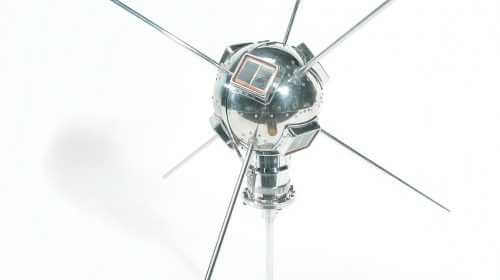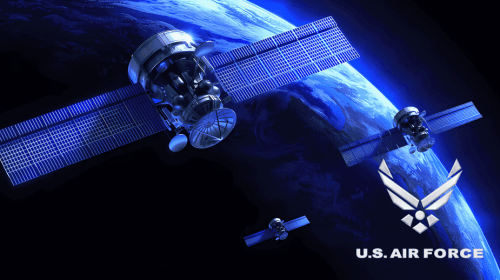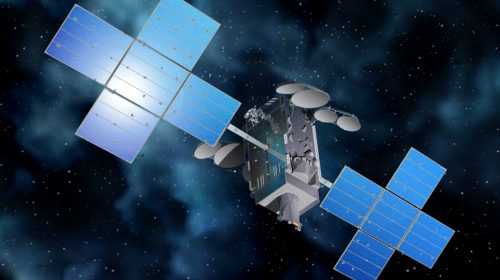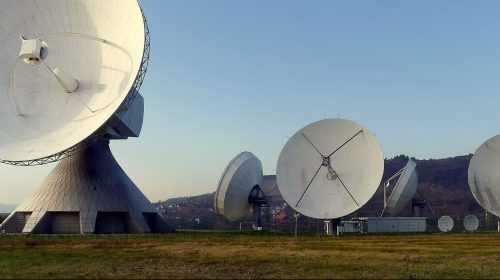In the present global security landscape, adversaries are increasingly seek to undermine strategic and operational strengths by impeding and, where feasible, denying command and control (C2) capabilities. The priority lies in the ability to regain and sustain an advantageous position in terms of information and decision-making. BusinessCom presents its C2 SATCOM solution, which empowers warfighters to enhance their efficiency in information sharing, battlefield visualization, and target engagement.
Overview
BusinessCom’s C2 SATCOM represents a cutting-edge and cost-efficient solution that facilitates Communications On The Move (COTM) beyond the line of sight (BLOS) using commercial satellite spacecraft. This solution features low-profile mounted and fly-away tactical terminals equipped with flat panel metamaterial antennas. The satellite links originating from remote nodes establish connectivity with headquarters or command operations centers through a single satellite hop. The solution supports direct, point-to-point, and point-to-multipoint connectivity.
With BusinessCom’s C2 SATCOM solution, mounted tactical terminals remain continuously connected to the network in motion, while fly-away terminals are deployed as needed. The training process is expedited, enabling operators to attain full proficiency in installing and operating the flat panel antenna within a half-day timeframe. Moreover, this solution offers a significantly reduced size, weight, and power (SWaP) profile compared to legacy parabolic satellite terminals. The standard mounted terminal stands at just under 6 inches in height, and a fly-away terminal weighs less than 18 pounds. These terminals effectively address the long-standing challenge of providing both BLOS and COTM/COTP capabilities at the tactical level, which has historically posed difficulties in the realm of Command and Control (C2).
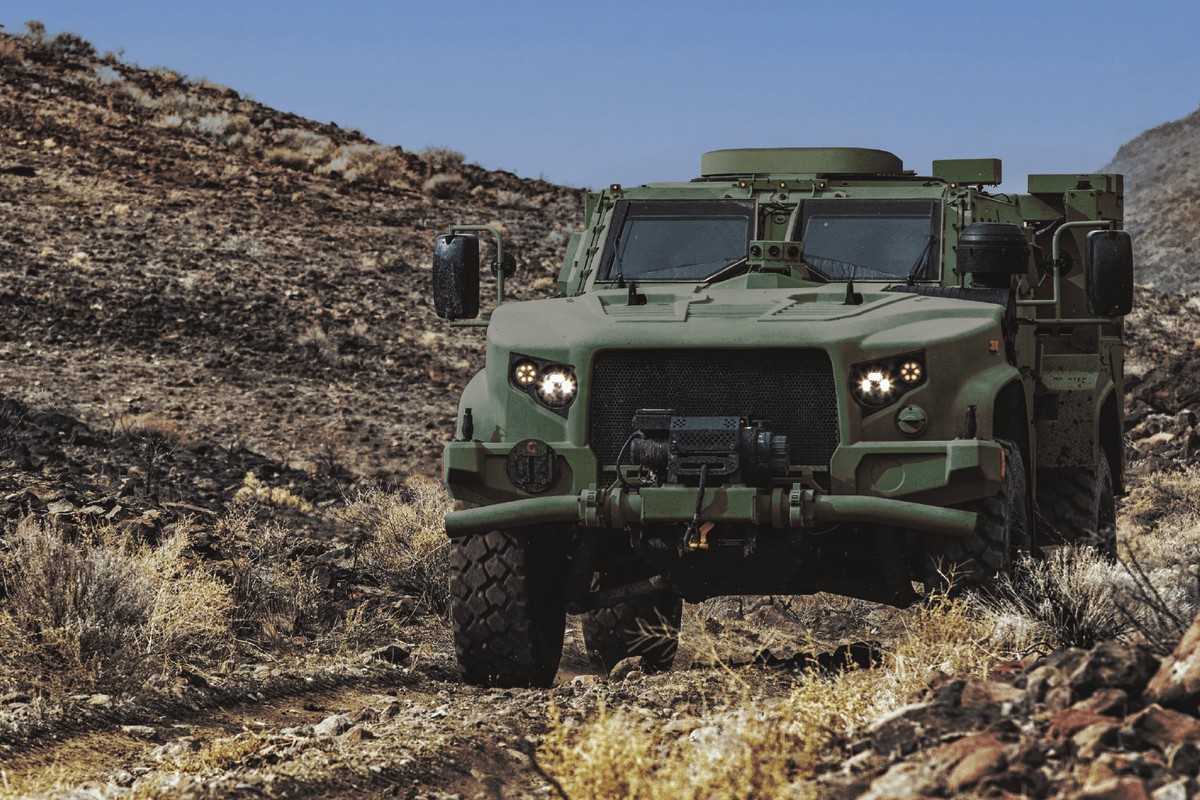
Modern engagements have undergone significant changes, characterized by asymmetric and non-linear operations. To optimize effectiveness in such scenarios, C2 systems must enable rapid adaptation to real-time developments. Whether the forward units belong to Special Operations Forces (SOF), conventional forces, or Joint Forces, a tactical communications solution is essential for maintaining effective C2 when operating beyond the line of sight (BLOS). There are multiple reasons driving this requirement, including ensuring an uninterrupted flow of targeting information, providing adequate support, and enabling swift coordination and flexibility. Traditionally, achieving this goal involved employing ground repeaters, air repeaters, or UHF Tactical Satellite Communications (TACSAT). However, each approach has its limitations when compared to BusinessCom’s C2 SATCOM solution.
Ground repeaters, for instance, become vulnerable targets themselves and necessitate protection, consuming valuable resources and escalating risks. Maintaining air repeaters operational round the clock is costly, and their reliability is not guaranteed due to adverse weather conditions. UHF TACSAT, although expensive, suffers from limited availability and can only be allocated to the highest-priority missions. Additionally, its capacity constraints render it inflexible and unresponsive. Moreover, it lacks effective communications on the move (COTM), as operators must pause and locate the satellite for communication purposes. In contrast, BusinessCom’s C2 SATCOM leverages advanced electronically steered beam technology in its innovative antenna design, allowing terminals to be utilized at high speeds and ensuring seamless communication, regardless of the operator’s direction of movement.
BusinessCom’s C2 SATCOM solution is highly suitable for both Land Operations and Amphibious tasks. This system ensures secure voice and data communications beyond line of sight (BLOS) while on the move (COTM), making it applicable to a diverse range of agencies. These include Special Operations Forces (SOF), Expeditionary Forces, Emergency Services, Intelligence Agencies, Border Protection, Coastguard, and many more. The solution offers broadband capabilities, enabling high-definition video connectivity alongside data links that support the transmission of diverse information, such as tracking data, artillery fire plans, biometric analysis, emails, file transfers, text, and other forms of data exchange.
The system allows for flexible configuration as shared or dedicated (non-contended) channels. This ensures quality of service, guaranteeing 24/7 availability for mission-critical protocols and applications. The solution supports full bi-directional QoS, prioritizing mission-critical protocols and applications when necessary.
Mounted and Fly-Away Tactical Terminals
BusinessCom’s C2 SATCOM mounted tactical terminal is a flat-panel, full-duplex antenna with integrated radome, antenna control unit (ACU), power supply, satellite auto-acquisition and tracking capability. It is built for operation in the most demanding and extreme land mobile and maritime environments and requires minimal training. It contains a modular expansion tray enabling field installation of mission-specific cartridges and additional external modems. The terminal supports resiliency options via optional embedded LTE modem enabling automated path diversity in contested environments. In addition to fully automatic deployment, the system supports manual positioning mode for operation in GPS-denied environments and can work with external GPS/M-code receiver.
The standard terminal operates on native DC power for use on a range of platforms from the smallest utility vehicles to the largest logistics vehicles. The antenna has no moving parts and a high MTBF, designed for low profile integration and low thermal signature. It provides dual RJ-45 Ethernet interface that allows seamless integration with existing hardware. Whether forces be from different agencies, be land or maritime or even from different nations, they can all join the same network and interoperate. Where combined joint fire support and manoeuvre relies on unity of effort and synchronisation of capabilities, the solution adds massive benefit.

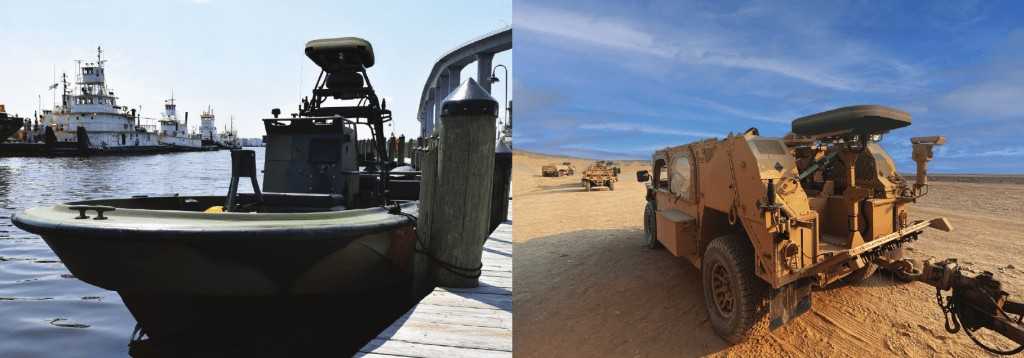
The terminal is designed to work with the current and next generation GEO satellites, and dual GEO/LEO operation capability for multi-orbit/multi-network use is supported. The terminal is fully deployment proven, as it is currently used by the US Army, US Marine Corps, US Special Operations Command, and US Joint Special Operations Command.
For dismounted units, BusinessCom’s C2 SATCOM offers fly-away communications-on-the-pause (COTP) terminal that weighs under 18 lb and can be deployed in less than 5 minutes, with 1-minute signal acquisition time. Designed for rough conditions and climate variations, it comes with hot-swappable batteries, offering 3 hours transmit time per pack. It is easily transportable in a backpack. The intuitive design makes it easy to use, even for non-engineers. Enabling anyone to establish a satellite broadband connection in remote and hard to reach areas. Both mounted COTM and fly-away COTP terminals can work and share bandwidth within the single C2 SATCOM network.
Advanced Security
BusinessCom’s C2 SATCOM solution incorporates a security feature that safeguards against adversaries exploiting information within a communications channel, even without successfully breaking the encryption. The solution enables encryption for all network control channels and Management & Control (M&C) data, ensuring that adversaries are unable to decipher or access this information. Additionally, all traffic engineering details are obfuscated, preventing adversaries from gaining insights into the network’s operations.
In this network configuration, even if there is minimal or no actual data being transmitted, all communication channels appear completely occupied to adversaries. This stands in contrast to communications security (COMSEC), where the content of the communication (such as voice, video, or data streams) is encrypted, but certain header information is transmitted without encryption. In COMSEC, elements like the IP header, including source and destination addresses, as well as the Type of Service (ToS) field, remain visible to adversaries. This header information can reveal the composition of the traffic stream, indicating the presence of voice, video, or data. Moreover, it allows adversaries to determine the initiation of high-priority flash-override traffic and identify its originating location.
However, by implementing full channel encryption and obfuscation within the C2 SATCOM network, this scenario is entirely prevented. Adversaries are unable to gain any valuable insights into the network’s traffic composition or identify specific high-priority communications, ensuring a higher level of security and protection.
Within the C2 SATCOM satellite links, all transmitted information is subjected to encryption at Network Layer 2, including control information to remote nodes. The encryption methodology employed is highly secure, effectively thwarting adversary attempts and rendering the data obsolete over time. To achieve this level of security, the solution incorporates Federal Information Processing Standard (FIPS) 140-2 certified 256-bit Advanced Encryption Standard (AES) encryption for both Layer 2 frames and control information. An additional benefit of Layer 2 encryption is that it re-encrypts the data payload itself, resulting in the AES encryption of the transmitted IP header. This comprehensive Layer 2 encryption solution successfully addresses vulnerabilities present in control channels, ensuring enhanced security.
Furthermore, the Layer 2 encryption method goes beyond encryption alone by introducing features such as over-the-air (OTA) key updates and a unique Layer 2 frame format, including an Initialization Vector that introduces randomization into repetitive data streams. This approach prevents adversaries from detecting any repetitive patterns that could aid them in deciphering encryption algorithms.
At the headquarters and command operations centers, the Earth Station incorporates X.509 digital certificates for authentication. During network acquisition, the remote node encrypts its X.509 certificate using its private key, and the hub verifies the authenticity by decrypting the certificate with the remote’s public key, and vice versa. This process ensures that a remote node is not only authorized to operate within the network but also verifies the trustworthiness of the hub as a trusted entity.
The system employs a FIPS-approved software method for key generation and automatic over-the-air key distribution protocol. This software-based approach not only simplifies and streamlines operations for the warfighter but also significantly enhances system security by eliminating human involvement in key distribution, thereby reducing potential vulnerabilities.
Main Advantages
- Adaptable COTM and COTP for national and joint operations
- Command and control to the tactical edge
- Mission-critical, real-time BLOS connectivity
- Use of commercial SATCOM capacity
- Built-in spectrum resiliency
- Quick training
- N+M COC/HQ Earth Station redundancy and geo-redundant hub options
- Custom bandwidth and SLA configurations to fit mission requirements
- iDirect and Comtech satellite platforms


